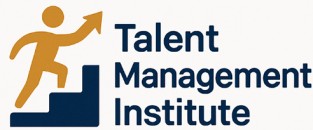Understanding the Importance of Headcount Planning
Recognizing the Strategic Value of Workforce Planning
In the realm of talent management, understanding the strategic role of headcount planning is crucial. It serves as the foundation for a robust workforce plan, allowing businesses to organize their employee resources effectively. But why is it so vital?
A well-structured planning template not only aids in managing current workforce demands but also equips organizations for future challenges. As you delve deeper into strategic workforce planning, it becomes essential to comprehend how planning impacts business goals, aligning with organizational strategies for sustainable growth.
The core value lies in forecasting the future workforce needs based on current data. By conducting a meticulous gap analysis, companies can identify skills gaps within their workforce. This insight guides the development of a comprehensive plan to fill these gaps, whether through hiring new talent or training current employees.
Moreover, strategic workforce planning supports succession planning by ensuring a pipeline of qualified employees ready for advancement. This proactive approach minimizes disruption and ensures continuity in operations, ultimately securing long-term success.
Effective headcount planning involves meticulous data analysis, which informs decision-making and prepares organizations for sustainable growth. Through this process, companies not only manage current demands but also prepare for future evolution.
For a deeper understanding of how strategic planning can enhance your organizational framework and talent management, explore this insightful resource on
unlocking the potential of predictive index certification in talent management. This knowledge will empower you to create more resilient and adaptive workforce planning strategies.
Key Components of a Headcount Planning Template
Building the Backbone: Components for Success
Creating a headcount planning template for workforce management requires attention to several critical components that lay the groundwork for successful talent management. This comprehensive approach not only is integral to effective planning but also contributes significantly to the overall strategic workforce plan.
- Data Collection and Analysis: Gathering accurate data on your current workforce is the foundation of your headcount planning template. This includes detailed records of employees, their roles, and skill sets. Accurate data enables effective gap analysis, highlighting skill gaps and areas for employee development.
- Forecasting Future Needs: Strategic forecasting involves anticipating the future workforce needs of your organization. This means not only thinking about the immediate hire needs but also longer-term strategic workforce requirements. Anticipating changes will ensure your organization has the talent necessary to meet future business goals.
- Skills and Succession Planning: Understanding the skills your organization currently has and the skills it will need is a crucial element of the planning process. This step includes building a succession plan to address potential skill gaps and prepare for shifts in workforce dynamics.
- Templates for Consistency: Having well-structured planning templates ensures consistency across the organization. Templates serve as a guide for strategic planning and help maintain a coherent approach to workforce planning.
- Alignment with Business Strategy: Aligning headcount planning with your overall business goals keeps efforts in sync with organizational objectives. It’s essential that your workforce planning strategy supports the business’s long-term development plan.
- Integration of Technology: Utilizing tools such as Google Sheets or dedicated workforce management software can greatly simplify the planning process. Technology offers a way to streamline data collection, analysis, and implementation aspects of talent management.
For further insights into enhancing planning processes through technology,
explore this resource that demonstrates the transformative role of office management software.
By incorporating these components into your headcount planning template, your organization will be better equipped to manage its talent strategically. In doing so, the workforce plan can more effectively support both present requirements and future workforce development.
Aligning Headcount Planning with Business Goals
Linking Headcount Plans to Corporate Objectives
Aligning headcount planning with business goals is crucial for an organization’s long-term success. A strategic headcount plan is not merely about numbers but about ensuring the workforce aligns with the strategic direction of the company. This involves building a comprehensive understanding of both the current workforce and future needs.
Integrating business objectives with workforce planning involves a thorough analysis of several elements:
- Skill Gaps and Talent Needs: Assess the skills present within the current workforce and identify any gaps that could impede reaching business goals. Use gap analysis methods to understand where your organization needs to focus on employee skill development or recruitment.
- Workforce Forecasting: Project future talent needs based on business goals and growth plans. This requires embedding forecasting methods into your planning template to foresee needs in workforce size and skillsets based on projected business developments.
- Succession and Development Plans: Prioritize not just recruitment but also internal employee development and succession planning to ensure a consistent talent pipeline. Align development plans with business objectives to prepare employees for future roles.
- Strategic Workforce Planning: Integrate strategic workforce planning elements into the headcount planning template, enabling your organization to proactively plan for future workforce shifts.
By linking your headcount planning to broader business strategies, you can ensure that workforce planning supports the organization's goals, from operational efficiency to competitive advantages. For more insights on integrating corporate services with talent management,
explore the role of integrated corporate services in talent management.
Leveraging Tools and Technologies for Effective Workforce Planning
In today’s rapidly changing business landscape, leveraging the right tools and technologies is crucial for successful headcount planning. With the advent of advanced data analytics, HR professionals are enabled to create more precise workforce planning strategies and templates. Let’s delve into how these resources can significantly enhance your organization's strategic workforce planning process.
Firstly, utilizing advanced software solutions is fundamental. Many organizations are turning to integrated HR systems that feature robust analytics capabilities, enabling them to perform comprehensive data analysis. These systems make it easier to monitor employee trends, identify skill gaps, and align headcount needs with business goals. Templates for workforce planning, readily available with many software solutions, simplify the long-term planning process by providing structured guidance on effective workforce management.
Moreover, having access to real-time data through cloud-based platforms like Google Sheets allows organizations to track current workforce changes and forecasts dynamically. These tools provide the flexibility and speed needed to adapt quickly to workforce demands, supporting not just immediate needs but also long-term succession planning and development plans.
A valuable component of technology-enhanced planning is the use of AI-driven forecasting tools. These tools can predict future workforce needs based on current and past data, assisting organizations in preventing potential skill gaps. They allow managers to make informed decisions about recruitment, training, and employee retention strategies, ensuring that the workforce is well-equipped to meet future challenges.
Integration of digital workforce templates in your planning helps streamline the entire process. Planning templates tailored to specific organizational needs ensure effective data capture and analysis for talent management. The templates act as a framework for planning, helping to maintain a comprehensive view of both current workforce structure and future workforce development needs.
Finally, insights drawn from these tools allow management to align headcount planning with broader strategic objectives. It enables the identification of crucial areas for employee development, ensuring the organization’s workforce remains competitive and competent.
The use of these technologies and tools undeniably enhances the capability of organizations to perform effective gap analysis and optimize talent management strategies. Organizations can then ensure that their planning process remains aligned with both present and future business goals, fostering a more resilient and adaptable workforce.
Common Challenges in Headcount Planning and How to Overcome Them
Navigating the Hurdles in Headcount Planning
In the complex landscape of headcount planning, several challenges tend to arise, potentially hampering the effectiveness of your workforce planning efforts. It's crucial to understand these challenges and develop strategies to navigate them effectively.
- Data Inaccuracy: One of the most common issues in workforce planning is dealing with inaccurate data. Given that a headcount planning template relies heavily on data inputs, it's imperative to ensure the data reflects the current workforce state accurately.
- Lack of Strategic Alignment: Aligning headcount plans with business objectives is vital. Misalignment can lead to skill gaps and inefficient resource allocation. It's essential to align your workforce management with the strategic goals of the organization.
- Inadequate Forecasting: Forecasting future workforce needs is inherently challenging due to the dynamic nature of business environments. Employing a robust forecasting model can help in anticipating skill gaps and planning succession effectively.
- Poor Communication: Often, gaps in communication between HR, management, and employees hinder effective headcount planning. Ensuring regular communication channels can mitigate this problem.
- Lack of Skilled Personnel: Without skilled personnel to manage and analyze workforce data, creating an effective headcount planning template becomes difficult. Investing in workforce management tools and training can bridge this skills gap.
Effective headcount planning requires a deep understanding of these challenges and proactive measures to address them. Whether it's through employing advanced tools or aligning with business goals, a strategic approach is essential. Utilizing workforce planning templates can aid in navigating these hurdles, ensuring your organization remains agile and well-prepared for future workforce demands.
Best Practices for Maintaining an Effective Headcount Planning Template
Ensuring Longevity and Relevance in Your Headcount Planning
Maintaining an effective headcount planning template is pivotal in aligning your organization's workforce strategy with its long-term business goals. Here's how you can ensure that your template remains a valuable tool for strategic workforce planning.
- Regular Updates and Reviews: The business environment is dynamic, and your headcount planning should reflect this. Routinely update your planning templates to consider changes in business objectives, workforce data, and market conditions. Regular reviews help in identifying any skill gaps or future workforce needs.
- Incorporating Data Analysis: Leverage data analysis to enhance your headcount planning process. Evaluate employee performance and organizational capabilities to forecast future headcount requirements effectively. Using data-driven insights can refine your strategic workforce plans, ensuring they are grounded in reality.
- Aligning with Development Plans: Headcount planning should correspond with employee development plans. This integration helps in succession planning by preparing current employees for future roles and identifying potential skill gaps in your workforce.
- Utilizing Advanced Tools: Embrace tools and software solutions that enrich your planning process. Technologies like Google Sheets or specialized workforce management applications can streamline data handling and forecasting. Stay informed about technological advancements to keep your planning template relevant.
- Engagement with Stakeholders: Collaboration within the organization is crucial. Engage with key departments to ensure that your planning aligns with various business objectives and covers all aspects of workforce management. This comprehensive approach helps in overcoming common challenges and supports organizational growth.
Maintaining an efficient headcount planning template isn't just about managing your current workforce; it's about preparing your organization for future success. By following these best practices, your headcount planning can become a strategic asset that supports broader business goals and drives the development of talent within your organization.














